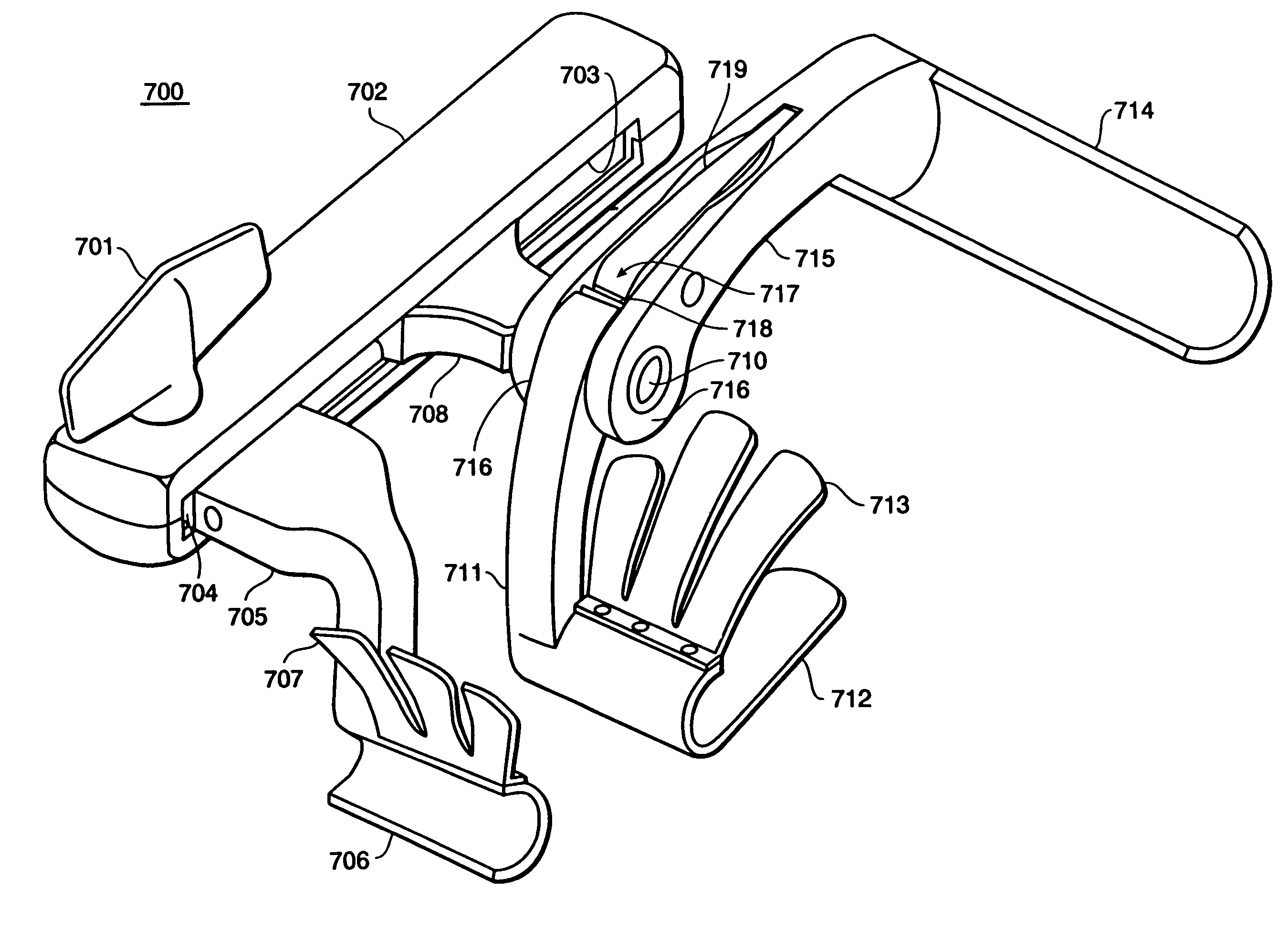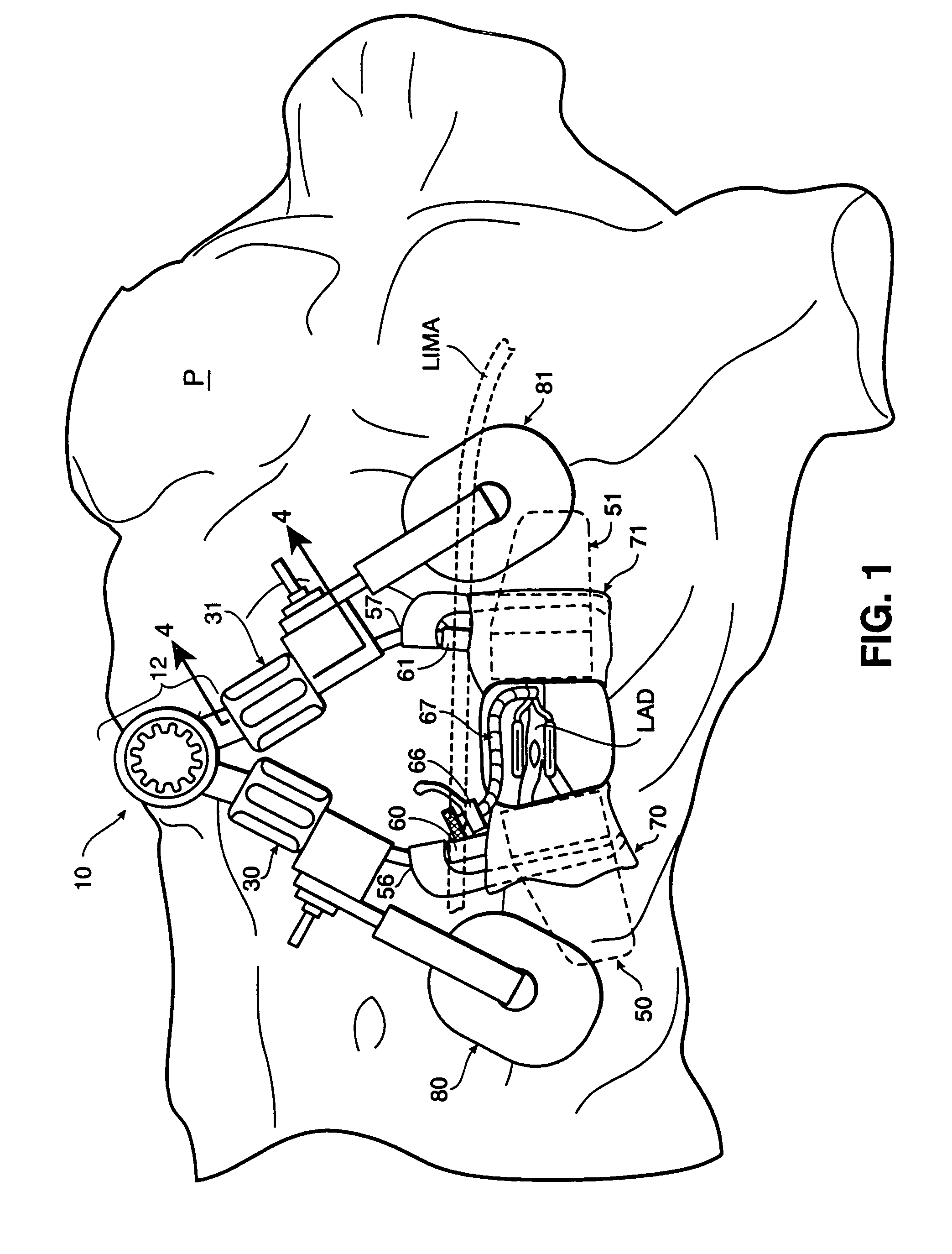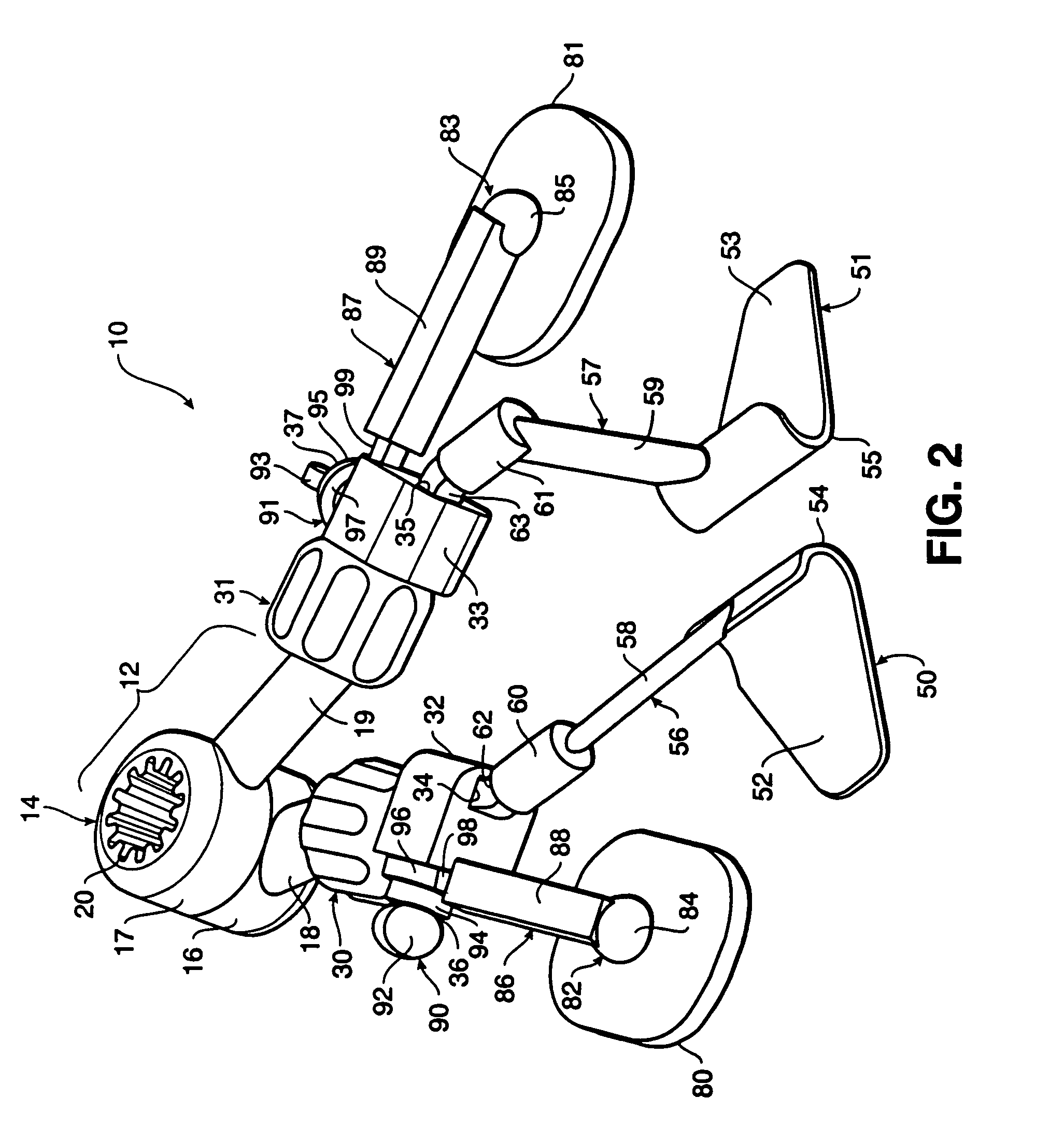Access platform for internal mammary dissection
a technology for accessing platforms and internal mammary arteries, which is applied in the field of retractors, can solve the problems of reducing the working space of surgeons, affecting the efficiency of the operation, so as to facilitate the dissection of internal mammary arteries and improve the surgeon's working space. , the effect of increasing the surgeon's working space and visual access to the ima
- Summary
- Abstract
- Description
- Claims
- Application Information
AI Technical Summary
Benefits of technology
Problems solved by technology
Method used
Image
Examples
first embodiment
[0146]As in the first embodiment, after the ribs have been vertically displaced, tissue retractors 70, 71 or 100 (shown in FIGS. 5-12) are operated to retract the soft tissue away from the incision area by either rotating the arms 72A and 72B about the pivots 150 and 151 on the blade arms 146 and 147 or bending or displacing the fingers 101A, 101B, and 101C over the patient's chest. By rotating the arms 72A and 72B about the pivots 150 and 151, the elastic sheets 77A and 77B advantageously grab, pull, and press down against the soft tissue to retract it away from the incision and out of the surgeon's working area. By bending or displacing the retractor fingers 101A, 101B and 101C over the patient's chest the fingers 101A, 101B and 101C advantageously press down against the soft tissue to retract it away from the incision and out of the surgeon's working area.
[0147]In a first offset position, the blade 141 raises the retracted ribs and the blade 140 depresses the retracted ribs so th...
eighth embodiment
[0163]Referring to FIGS. 24 and 25, the access platform 310 of the present invention includes telescoping arms 390 and 392 incorporated with the access platform 310 shown in FIG. 18. The telescoping arms 390 and 392 are perpendicularly disposed between and releasably attached to the blades 350 and 352. In addition, the blade arms 338 and 340 include branch extensions 347 and 349 releasably coupled at break lines B1 and B2 to the branches 346 and 348 (FIG. 25).
[0164]In operation, the blades 350 and 352 are inserted in an incision in the chest to capture the ribs. The lever 326 is then rotated to drive pinion 324 along the rack 320 and spread the ribs. Once the ribs are retracted to a desired spacing, the telescoping arms 390 and 392 are connected to the blades 350 and 352 and engaged to hold the blades 350 and 352 apart. The branches 346 and 348 are then decoupled from the branch extensions 347 and 349. The remainder of the access platform 310 can be moved away from the surgical site...
ninth embodiment
[0166]Turning to FIG. 26, the access platform 410 of the present invention is shown. The access platform 410 mounts to the table or rail via slides 438 and 440 that are locked in place by positioners 450 and 452. The slides 438 and 440 rotatably retain pinions 442 and 444 driven by levers 446 and 448 and slidably receive stanchion racks 430 and 432. The stanchion racks 430 and 432 include rack gears 434 and 436 that operably couple with pinions 442 and 444. The levers 446 and 448 are rotated to drive the pinions 442 and 444 along rack gears 434 and 436 to adjust the height of the stanchion racks 430 and 432 relative to the table or patient, or to vertically offset blades 470 and 472 relative to one another.
[0167]A pinion housing 422 is slidably attached to the stanchion rack 432 towards its upper end. A rack 420 is attached at one end to stanchion rack 430 and is slidably received in the pinion housing 422. A pinion 424 driven by a lever 426 is rotatably retained in the pinion housi...
PUM
 Login to View More
Login to View More Abstract
Description
Claims
Application Information
 Login to View More
Login to View More - R&D
- Intellectual Property
- Life Sciences
- Materials
- Tech Scout
- Unparalleled Data Quality
- Higher Quality Content
- 60% Fewer Hallucinations
Browse by: Latest US Patents, China's latest patents, Technical Efficacy Thesaurus, Application Domain, Technology Topic, Popular Technical Reports.
© 2025 PatSnap. All rights reserved.Legal|Privacy policy|Modern Slavery Act Transparency Statement|Sitemap|About US| Contact US: help@patsnap.com



